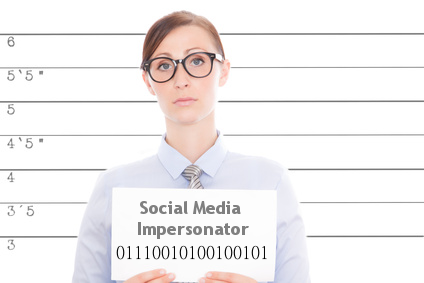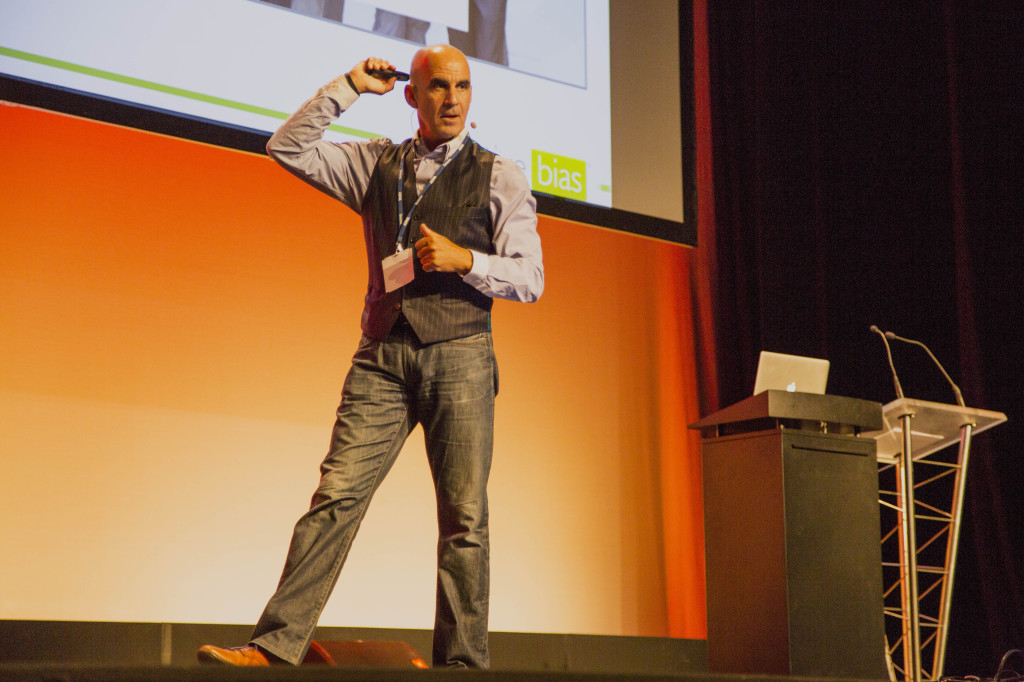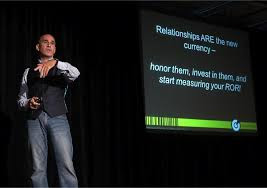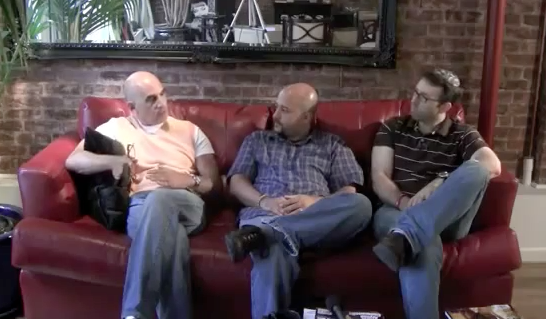Many companies completely outsource social media management. These companies may have good reasons for this decision. Yet, when outsourced, social media communications misrepresent reality. In fact, is it possible that completely outsourcing your social media accounts should be outlawed? Below are a couple issues to consider:
 Ted Rubin
Ted Rubin
It’s Not OK…
It is not ok to just use social channels to just broadcast.
It is not ok to simply advertise and call it Social Media.
It is not ok to block employees from accessing social media sites while at work.
It is not ok to discourage employees from building their own personal brands.
It is not ok to allow PR agencies to be your social voice without regular input from company employees.
It is not ok to let interns set your social media strategy.
Real Time Marketing – the Good, the Bad and a better Customer Experience
Getting the right message to the right people at the right time is an age-old marketing mantra. And how you hit that sweet spot has been foremost in the minds of every marketer since people started selling things to each other. That hasn’t changed over the years, but our ability to connect with each other and gather information about each other has. So you would think that with today’s Real-Time Marketing (RTM) and all this technology at our fingertips we could hit the bull’s eye every time, right? Well… we’re getting there, but it’s still a rocky road. Sometimes when we try to use advances in technology to get in front of more prospects, we get some push-back, especially online and in social channels. However, that depends on how the information gets used.
Gallaghers Steakhouse (@Gallaghers_NYC), A New York City Institution, Reopening…
Gallaghers was acquired in January 2013 by Central Park Boathouse operator Dean Poll, a good personal friend who has shown me time and time again that Return on Relationship is part of his DNA. Dean is a native Long Islander who grew up in the restaurant industry. Traveling to Brooklyn on weekends with his father to work at the family owned Pappas Restaurant, Dean learned the business from the ground up… literally. From sweeping floors to cleaning shrimp; no job was too menial for this 8 year old.
Dean closed the restaurant on July 9th for renovation and rejuvenation. I visited a couple of weeks ago and got a sneak peak. The photos here do not do it justice and I am anxiously awaiting the reopening which is expected to be February 4th. Please come and check it out as soon as it reopens. I assure you the experience and ambiance will be second to none.
My Most Important Social Media Tools…
1 – My personality
2 – My passion
and…
3 – My obsessiveness with being connected ![]()
*Thanks for asking this question and making me think about it Bryan Kramer.
Consider Social Customer Service to Establish Social Media ROI ~via @ignitesma
This post is right on point and makes a perfect case for Return on Relationship (#RonR) enhancing ROI. See below for the screen shot of a coincidental engagement I had with United Airlines right before I saw this post from John.
Originally posted at Ignite Social Media
“Create smiles… they are the currency of conversations.” #RonR – Ted Rubin
When I tweet a brand, like a growing number of consumers, I expect them to respond, especially if I have a question or a problem. For many, Twitter has become the customer service contact of choice. Even when I don’t have an inquiry, it’s nice to know the brand is there in a humanistic sort of way. Like I know@AmericanAir is there for me, even when i’m not asking for anything:
Creativity in Social Media
I think creativity in social media is at the heart of the problem of realizing and executing the true value of social. Save the creativity for advertising “campaigns,” and get down to the basics of relationship building when it comes to discussions about social and connecting with consumers.
The payoff is a long-term and personal relationship that creates brand advocates and an emotional connection that drives influence. To achieve such an enriching relationship, communication must be relevant and have a distinct and authentic personality. So steer your efforts, and resources, to “creatively” connecting, value added content, and empowering your employees to be a part of solution.
Brands/Companies that use social beyond the campaign will reap the rewards of customer satisfaction, deeper employee loyalty, more effective knowledge sharing, improved brand reputation, lowered costs, and most importantly, increased revenues.
The Rise of the Mansumer is a Myth Created by Men
For years a number of years now the prevalent wisdom in marketing circles has been that men brought home the bacon, and women ran the house and ruled the household checkbook. Marketing to women has been the focus and the norm, and with the rise of the Mom Blogger community, this central core of marketing has been the focus of influencer marketing as well. Women shop for groceries, feed and cloth the family, and manage the household finances. They even largely influence the big decisions on housing, car purchases and other big-ticket expenditures. So we have come to market our products with women in mind.
But in the past couple of years we’ve been hearing about a new type of consumer—the “mansumer.” Especially with the economic pressures of current times, we can’t deny that more and more households are dual-income. Combine that with the fact that younger people are marrying later, and we’re seeing a shift in the traditional male role. More men are making purchases than ever before. They’re sharing household chores much more than in the past, and also taking on more duties in childcare. Dad Bloggers are yearning for attention and declaring themselves highly influential and an important target for marketers.
Marketing agencies (mostly dominated by men, incidentally) are looking at these recent trends and suggesting that more attention be given to marketing to the mansumer—and retailers have taken it seriously. From male-oriented “man isles” in grocery stores to car manufacturers producing more macho themed vehicles, even candles with manlier-named scents (Riding Mower and 2X4), marketers are rushing to cater to an audience they’ve been led to believe are supplanting their feminine counterparts.
But is the mansumer really pushing the female consumer off her pedestal? Should marketers really be turning everything they’ve learned in the past decade about consumerism and the female role in it upside-down? I don’t think so.
Hey look—for all intents and purposes, I’m a mansumer. As a single father, I’ve been making my own shopping choices now for years, as I’m sure are many of my brethren. However, I’m not particularly drawn to the “man-isle” when shopping for groceries, nor do I think that men are actually making more household decisions… even most of mine are influenced or directed by women. Truth be told, I think it is more about a cry for attention than a true shift in behavior and decision-making.
Whether or not men are sharing more responsibility in married households (and I believe they are), women still make the majority of decisions. Even if the husband goes out to do the shopping, and the woman is a high-level execustive, what is more important is understanding who makes the list and is primarily responsible for what is purchased. I don’t see that the female has “given up” her role as primary ruler of the household; not by a long shot.
In my opinion (and you may hear differently from many men, at least when you talk to them without their wives in the room) it is still to a very large extent the women controlling what’s in the shopping cart. Men may claim they have control, or even share it, but I strongly believe that is not the case. They are doing the chores, but not controlling the majority of buying decisions.
Sit a man next to his wife and ask him the same question and I am absolutely sure you will hear a different answer. Guys have an inherent desire to be recognized for their contributions and like to talk it up when they are with groups of men. It’s the way they’re built. But that doesn’t mean the basic purchasing dynamic has really changed. It only means that the male personality and ego has become interjected.
In the larger scheme of things, I think mansumerism is a myth. When alone, men cannot help but take more credit for decisions than they deserve—so let’s not get too crazy. Marketing and myths don’t mix very well.
How to Look People in the Eye Digitally
Over the years I’ve been asked by a lot of people how they can be more successful in building relationships on social channels. And the one thing that keeps coming to the surface is the importance of being “present” when you’re talking to someone.
You know how it is when you meet someone at a conference or in a networking situation and they’re constantly looking around the room to see who else is there, or they’re looking at their watch, or anywhere except at you? Those signals mean they aren’t really “present” in the conversation, so there is no true connection.
The same principles apply to online relationships, so I’m a big proponent of doing what I call… Looking People in the Eye Digitally, as well as personally. Introductions and ongoing relationships in social platforms require the same personal attention as the human touch and eye contact in a physical relationship, so here are 12 tips for making that happen:
1. Always address them by name (even if you have to dig a little).
Sometimes it can be hard to figure out a person’s first name by their Twitter, Facebook or Instagram handle. However, the human need to be addressed by their given name is still important. When you’re thanking someone for a re-tweet or a share, make sure you mention them by name. You might have to look at their profile to find it, but do it!
2. Find something in their bio and make mention of it.
The need for recognition goes beyond just names. When someone takes the time to look at your bio, picks up on something there and mentions it to you or asks you about it, you can’t help but respond favorably. Make a habit of looking at other people’s bios when you’re opening up conversation.
3. Show them that you’re listening to what they’re saying (reference conversations, etc.).
Listening is every bit as important digitally as it is personally. Stop thinking about what you’re going to say next and REALLY listen to what the other person is saying. Reference something they said in an online conversation and ask them about it. Read their blog—take a look at their website, and look for ways you can connect based on what you’ve learned.
4. Make it personal and authentic.
Look for possible connections to what you like, places you’ve been–would like to go–kids, etc. When you’re looking at a person’s bio (or Blog or About Page on their website), look for inter-personal connection points where your lives might intersect. “Oh, I see you live in Park City, Utah—I love to take my kids skiing…” Make sure it’s an authentic connection. If you’re not a skier, don’t say you are.
5. Find them on all possible channels and link up–not just one.
If you meet someone on Twitter, look for other platforms they frequent. You might have to dig a little and go to their website or do a search for them on Facebook or LinkedIn, but make the effort to connect with them on different channels. You never know where the next conversation might crop up that will spark an opportunity.
6. Give them an online recommendation (such as LinkedIn).
Giving a recommendation or testimonial spontaneously demonstrates thoughtfulness. People get notifications via email or on the platform that you’ve reached out, and this effort won’t go unnoticed. However, recommendations should be authentic and based on your knowledge of their business or interactions with them—not empty platitudes. And don’t do this with the intention of getting a recommendation in return. Give it as a genuine gift without expectation.
7. Send a note with a helpful link or photo “just because”.
Before the Internet, a common practice in business networking was to clip out a 3rd-party article (not your own stuff), put a note on it and mail it to someone you thought could benefit (Amy, I thought of you when I saw this!). Do the same thing via social messaging, but it should be on an individual basis. Reference an article link, a video or send a photo—use their name and tell them why you sent it!
8. Put them in a list or a circle so their social interactions don’t get lost in the stream.
Most platforms have list options, so use them wisely to keep track of those you want to interact with regularly. As social streams get crowded, it becomes more important to segment your feeds and keep track of people. The old adage “out of sight, out of mind” really is true, both online and off.
9. As a question to get their opinion (not a poll).
Asking someone for their individual opinion shows them that you care about what they have to say. Look for those opportunities to deepen conversation.
10. Pick them out in a crowd.
Do you participate in Google Hangouts or Twitter Chats? Look for familiar handles/names and make a point to say hi individually. Here again, personal recognition is a key in keeping those relationship fires burning.
11. Wish them a happy birthday and make it unique.
When you get an opportunity to wish someone a Happy Birthday, as with Facebook’s birthday reminder, make it a point to make it personal rather than just a generic wish. Find a good birthday quote—add a picture—mention something unique about them… and use their name.
12. Take it off-line.
Make it regular practice to offer yourself publically for a short telephone one-on-one to find out more about someone or just catch up. Ask how you can network or refer them business. Most importantly, make it about THEM. Asking “How can I help you?” builds great rapport.
What are some of the ways you’ve found to look people in the eye on digital channels?










